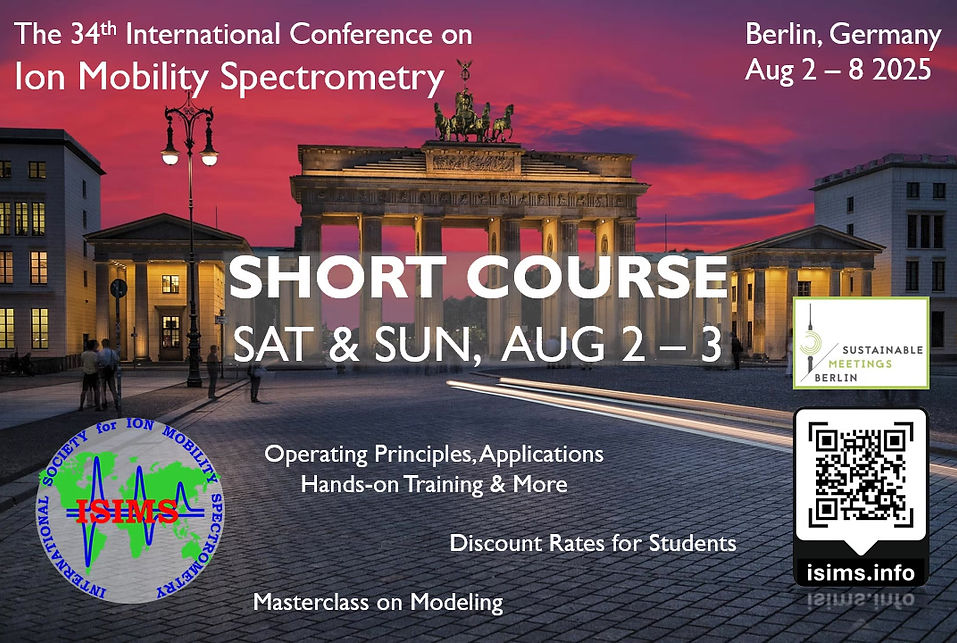Short Course
Instructors:
Brian H. Clowers, Ph. D. – Washington State University
Alexander Haack, Dr. – Leibniz University Hannover
Ansgar T. Kirk, Dr.-Ing. - ACKISION
The Short Course for the ISIMS 2025 will be held on the Saturday and Sunday, Aug. 2-3, 2025. The syllabus and learning objectives are listed below. For further information, please contact Prof. Brian Clowers at brian.clowers AT wsu.edu or Alexander Haack at haack AT geml.uni-hannover.de.
The in-person short course is suitable for individuals with varying levels of experience, including those who are new to the field. All efforts will be made to accommodate the interest of the attendees with topics anging from IMS fundamentals to a wide array of applications, including detection and structural identification of molecules. Lectures cover various forms of IMS (e.g., drift tube IMS, DMS, TWIMS, TIMS, cyclic IMS, AIMS), stand-alone IMS instruments and tandem systems (e.g., coupled to chromatography and mass spectrometers). The short course also includes the popular hands-on training with commercial IMS instruments!
Dates and Location:
Dates: Saturday, Aug 02 and Sunday, Aug 03, 2025
Location: Leonardo Royal Hotel Berlin Alexanderplatz (conference hotel)
Room will be published shortly
Syllabus:
History and operating principles of IMS
Ionization sources and ion chemistry
Collisional theory and measuring mobility
Different types of IMS and tandem IMS systems (incl. IM-MS)
Applications
Masterclass on Modeling in IMS
Hands-on instrument demonstration
Learning Objectives:
After attending the short course, students will be familiar with:
Principles and operation of linear gradient ion mobility, differential mobility spectrometry,aspirator and dynamic field instruments (e.g., TIMS, TWIMS)
Instrument attributes associated with hyphenated mobility systems
Components of an IMS and their importance in relation to the performance of the IMS system
Fundamentals of ion mobility theory and modeling aspects (e.g., structure to mobility)

